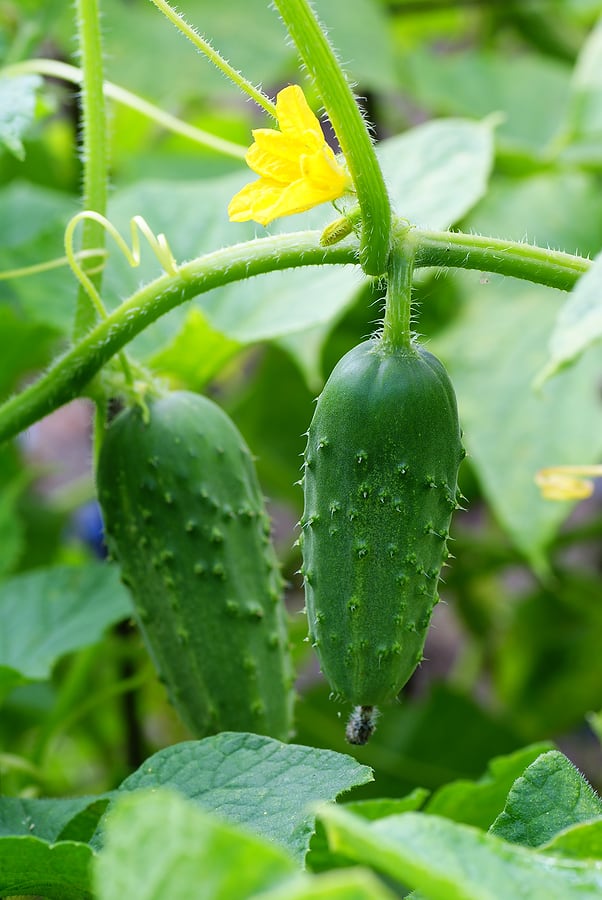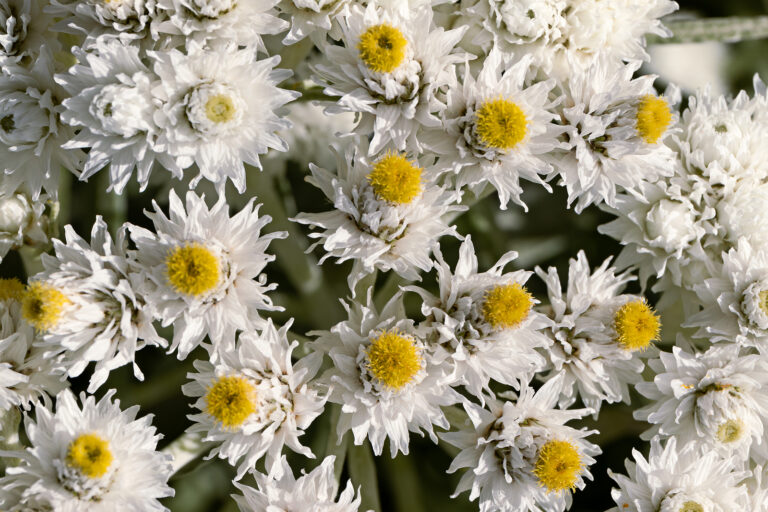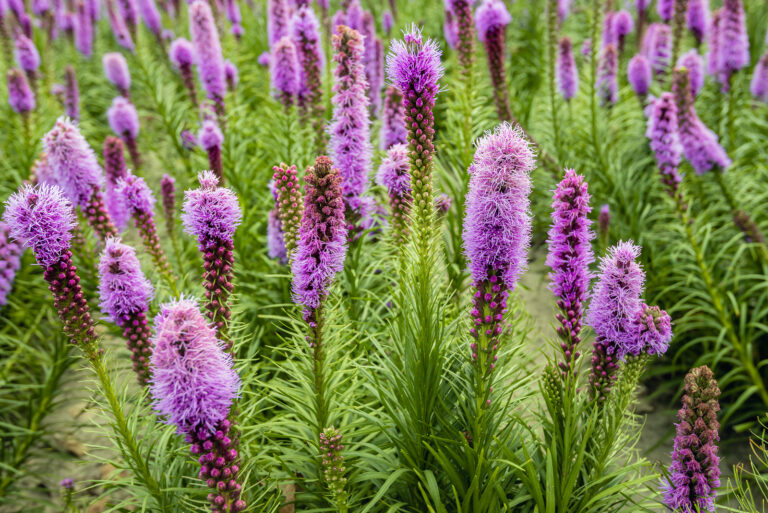Ultimate Guide to Growing Cucumbers From Planting to Harvest
Cucumbers are one of the most satisfying crops you can grow in a home garden. Whether you enjoy them fresh in salads, pickled in jars, or sliced on sandwiches, cucumbers are fast-growing, productive, and relatively easy to cultivate with the right knowledge and care.
I’ve been growing cucumbers for more than 30 years in home gardens of all sizes—from raised beds to backyard rows to patio containers. In this guide, I’ll walk you through everything you need to know to grow cucumbers successfully, from planting seeds to harvesting crisp, delicious fruit. You’ll also find links to in-depth articles for specific growing stages and troubleshooting help.
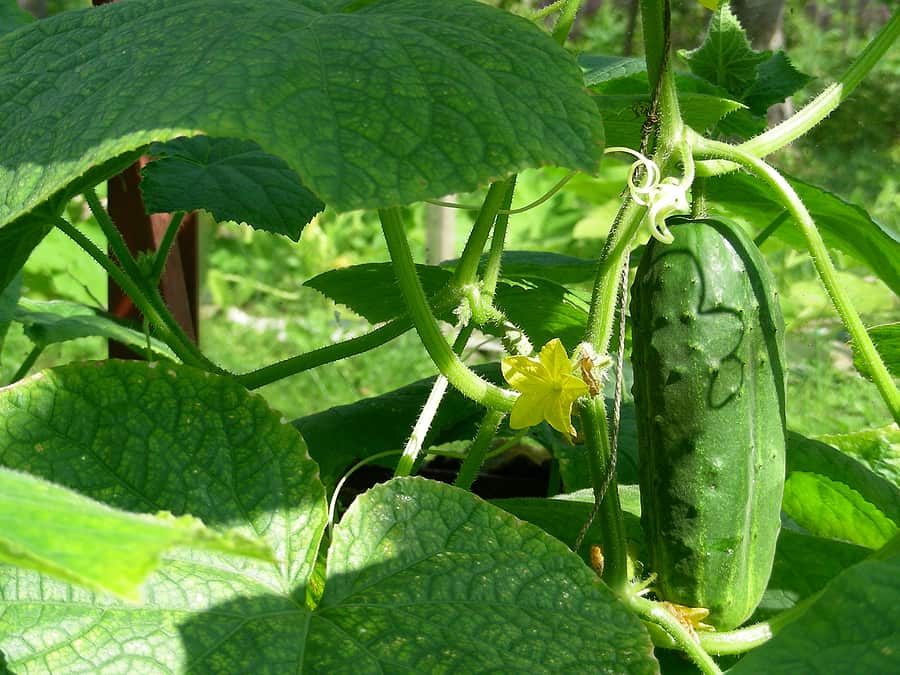
Cucumbers are weak-stemmed tender annuals that grow best in temperatures ranging from 60° to 90°F (15°-32° C). Some varieties grow like a bush, others are vining.
Why Grow Cucumbers?
Cucumbers are prolific producers when given the right conditions. They grow quickly, thrive in warm weather, and are versatile in the kitchen. I love growing cucumbers because they’re one of the first crops to show results fast—and with proper care, you’ll get weeks of continual harvest.
My Experience Tip:
If you’re new to gardening, cucumbers are a rewarding choice. I often recommend them to first-time gardeners because their growth is visible almost daily, which keeps motivation high.
Types of Cucumbers: Which One Should You Grow?
Cucumbers come in several distinct types, each suited to different uses and growing conditions. Choosing the right variety is key to getting the harvest you want—whether it’s crisp slices for your salads, crunchy pickles in jars, or compact vines for a small garden or balcony.
Here’s a breakdown of the most common types of cucumbers, along with some of my favorite tried-and-true varieties:
🥒 Slicing Cucumbers
These are the classic cucumbers you reach for when making a salad or sandwich. They’re usually longer, smoother-skinned, and bred to be tender with minimal bitterness.
- Ideal for: Fresh eating, slicing into salads, sandwiches, and wraps.
- Recommended Varieties:
- Marketmore 76 – A reliable heirloom I’ve grown for years. It’s disease-resistant, prolific, and performs well even in less-than-ideal conditions.
- Straight Eight – A vigorous producer with straight, uniform fruits perfect for fresh use.
Experience Tip: If you want a steady supply of cucumbers for summer meals, plant a few slicing types in succession every few weeks.
🥒 Pickling Cucumbers
These are shorter, often bumpier cucumbers bred specifically for pickling. They have firmer flesh and thinner skins, making them ideal for preserving in vinegar or brine.
- Ideal for: Pickling whole or in spears, fermenting.
- Recommended Varieties:
- Boston Pickling – One of the oldest and most dependable pickling varieties. It produces tons of crisp, flavorful cukes.
- National Pickling – A fast grower that holds up well in jars and has great disease resistance.
Pro Tip: Pickling cucumbers should be harvested young—3 to 5 inches—for best texture and crunch. If you let them get too large, the skin toughens.
🥒 Burpless/Seedless Cucumbers
These cucumbers are bred to be mild, low in bitterness, and easier to digest—hence the name “burpless.” Many are seedless or have very tiny seeds.
- Ideal for: Fresh eating, especially for those sensitive to standard cucumbers.
- Recommended Varieties:
- Tasty Green – A popular Japanese variety known for its sweet, thin-skinned fruits.
- Diva – A seedless, nearly all-female variety that sets fruit without pollination and thrives in many climates.
Experience Note: These varieties tend to do best on trellises where the fruits hang freely, resulting in straighter and more uniform cucumbers.
🥒 Bush Cucumbers
Perfect for small-space gardeners, bush varieties are compact and produce well in containers, raised beds, or even window boxes.
- Ideal for: Container gardening, small raised beds, patio growing.
- Recommended Varieties:
- Bush Pickle – A space-saving plant that produces lots of small fruits great for pickling.
- Spacemaster 80 – A bushy slicing type that only grows about 2 feet wide but still pumps out full-size cucumbers.
Container Tip: If you’re short on space, pair a bush cucumber variety with a trellis and a 5-gallon container. You’ll be surprised how much you can harvest from a small footprint.
By understanding the differences between these types, you can choose the right cucumber—or a mix of several—to suit your garden size, eating preferences, and preservation plans. Personally, I like to grow a combination of slicing and pickling types every season. That way I’m set for both fresh meals and batches of refrigerator pickles.
Expert Tip:
I grow both slicing and pickling varieties to extend the usefulness of my crop. Planting both ensures you have cucumbers for salads and jars of pickles for later in the season.
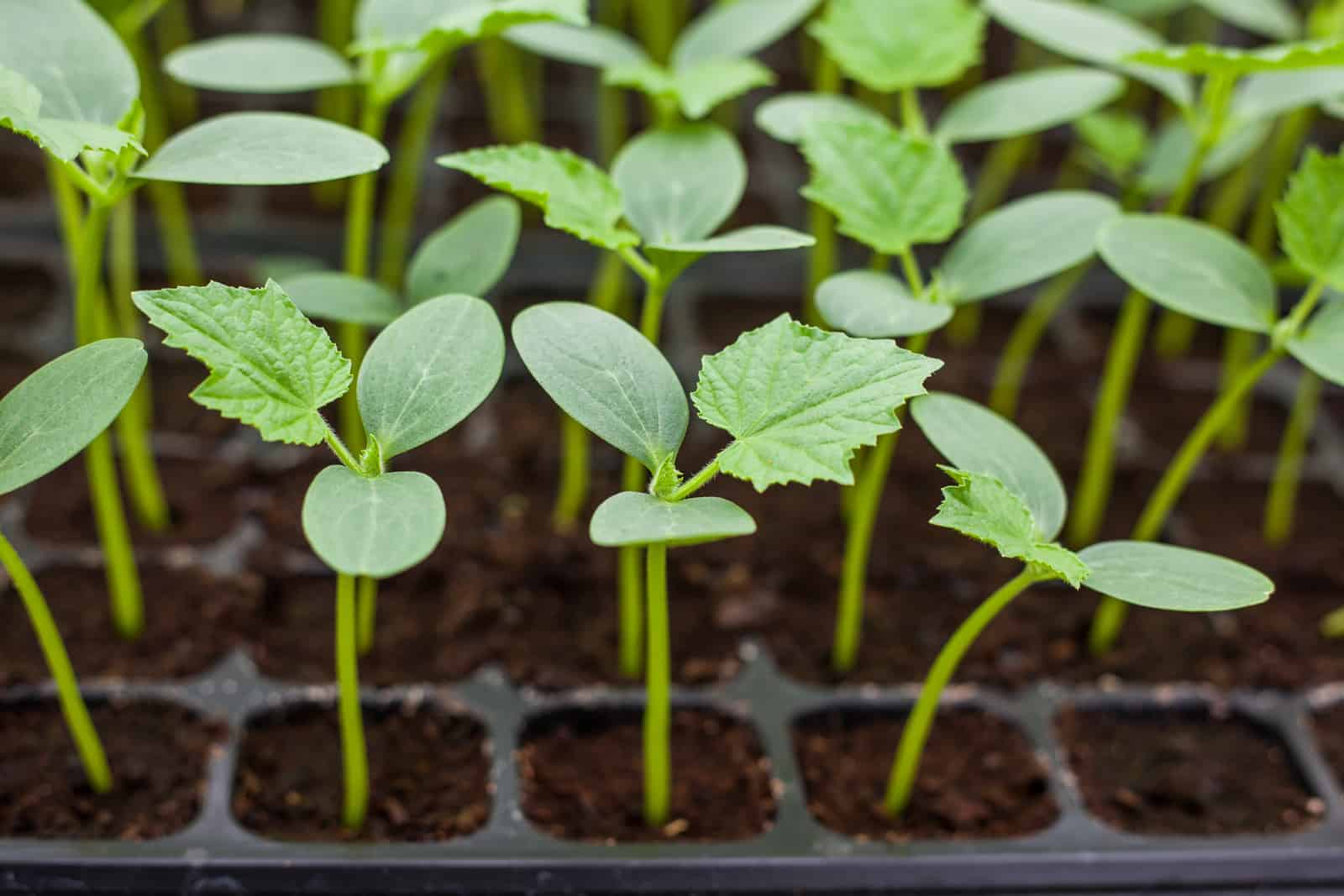
When to Plant Cucumbers
Cucumbers–natives of India–love warm weather. Wait until soil and air temperatures average 70°F each day before sowing or transplanting cumbers to the garden.
While warm temperatures are required for growing, cucumbers require a relatively short season–55 to 60 days from sowing to harvest. In long-season regions, you can plant successive crops. In cool or short-season regions, choose the warmest time of the year for growing cucumbers.
Cucumbers are sensitive to cold. Wait until soil temperatures are consistently above 65°F (18°C) and all danger of frost has passed.
- Spring planting: After the last frost date.
- Succession planting: Every 2-3 weeks for a longer harvest window.
How to Start Cucumber Seeds
You can start cucumber seeds indoors about 2–3 weeks before your area’s average last frost date, or you can sow them directly into the garden once the soil has warmed. Starting seeds indoors gives you a head start on the growing season, especially in cooler climates with shorter summers. Use peat pots or other biodegradable containers to reduce transplant shock, as cucumbers have sensitive roots and don’t like being disturbed. Keep the indoor growing environment warm—ideally between 70–85°F—and provide plenty of light, either from a sunny windowsill or a grow light setup. On the other hand, direct sowing is a great option if your soil has warmed to at least 65°F and the danger of frost has passed. Direct-sown cucumbers often develop stronger root systems and adapt better to outdoor conditions. Whether you choose to start indoors or direct sow, make sure the location gets full sun and the soil is rich and well-draining. In my experience, direct sowing leads to slightly sturdier plants, but I still use indoor starts when I want to jump-start the season or stagger my harvests.
Starting Indoors:
- Use biodegradable pots to avoid transplant shock.
- Keep soil warm (70–85°F) for fast germination.
- Provide plenty of light—cucumbers are sun lovers even as seedlings.
Direct Sowing:
- Sow seeds 1 inch deep and 2–3 feet apart in rows or mounds.
- Thin seedlings to strongest plants.
Transplanting and Direct Sowing
If you’re transplanting cucumber seedlings that were started indoors, it’s essential to harden them off before planting them into the garden. Hardening off is the process of gradually introducing young plants to outdoor conditions so they can adjust to the sun, wind, and temperature changes without stress. Without this step, tender seedlings can wilt or become stunted.
To harden off cucumber seedlings:
- Begin 5–7 days before transplanting.
- Set seedlings outside in a sheltered, shady spot for a few hours each day, gradually increasing their time outdoors and their exposure to direct sunlight.
- Avoid windy or very cold days during the hardening-off period.
- Bring plants indoors or cover them overnight if temperatures drop below 55°F.
Once hardened off, you can transplant them into the garden when the soil is warm and all danger of frost has passed.
Spacing Guidelines:
- Vining cucumbers (most standard varieties):
Space 12–18 inches apart in rows that are 3–4 feet apart. If you’re trellising, you can space them a bit closer. - Bush cucumbers (compact varieties):
Space 6–8 inches apart in rows about 2 feet apart or grow in large containers.
Experience Tip: I prefer direct sowing in warm soil—it leads to stronger roots and less transplant shock. But for an early start, transplants work if handled carefully. I often use a trellis even for semi-bush types to save space and improve air circulation, which helps prevent disease. Just make sure the support is in place before the vines start to run!
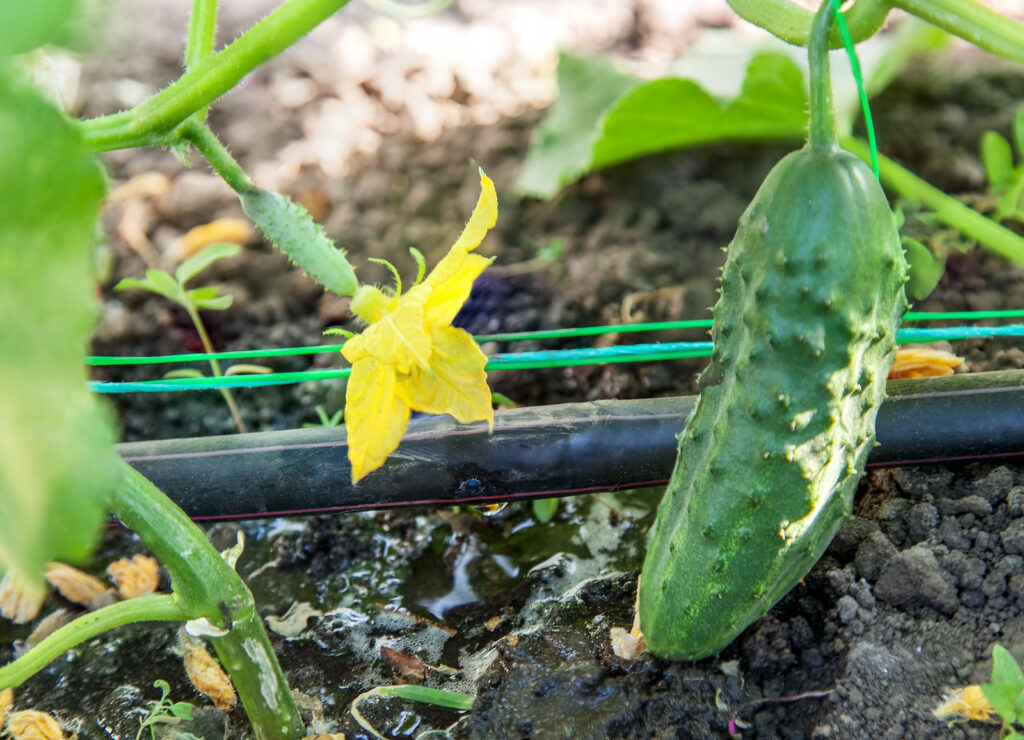
Soil, Sun, and Water Requirements
Cucumbers thrive when given the right growing conditions, so setting them up for success from the start is essential. Choose a location that receives full sun, meaning at least 6 to 8 hours of direct sunlight each day—this ensures strong, vigorous growth and good fruit production. They prefer rich, well-draining soil, so it’s a good idea to amend your garden bed with plenty of compost or aged manure before planting. This not only improves fertility but also helps retain moisture without causing soggy conditions. Aim for a soil pH between 6.0 and 7.0, which is slightly acidic to neutral and ideal for nutrient uptake. Cucumbers also need consistent moisture, especially during flowering and fruit development—keep the soil evenly moist, but avoid overwatering, as waterlogged roots can lead to rot or fungal issues. Mulching around the plants can help regulate soil moisture and reduce weeds.
Cucumbers thrive in:
- Full sun: At least 6–8 hours daily.
- Rich, well-draining soil: Amend with compost or aged manure.
- pH: Slightly acidic to neutral (6.0–7.0).
- Consistent moisture: Keep soil evenly moist but not soggy.
Experience Tip:
Mulching around the base helps retain moisture, suppress weeds, and keeps fruits clean.
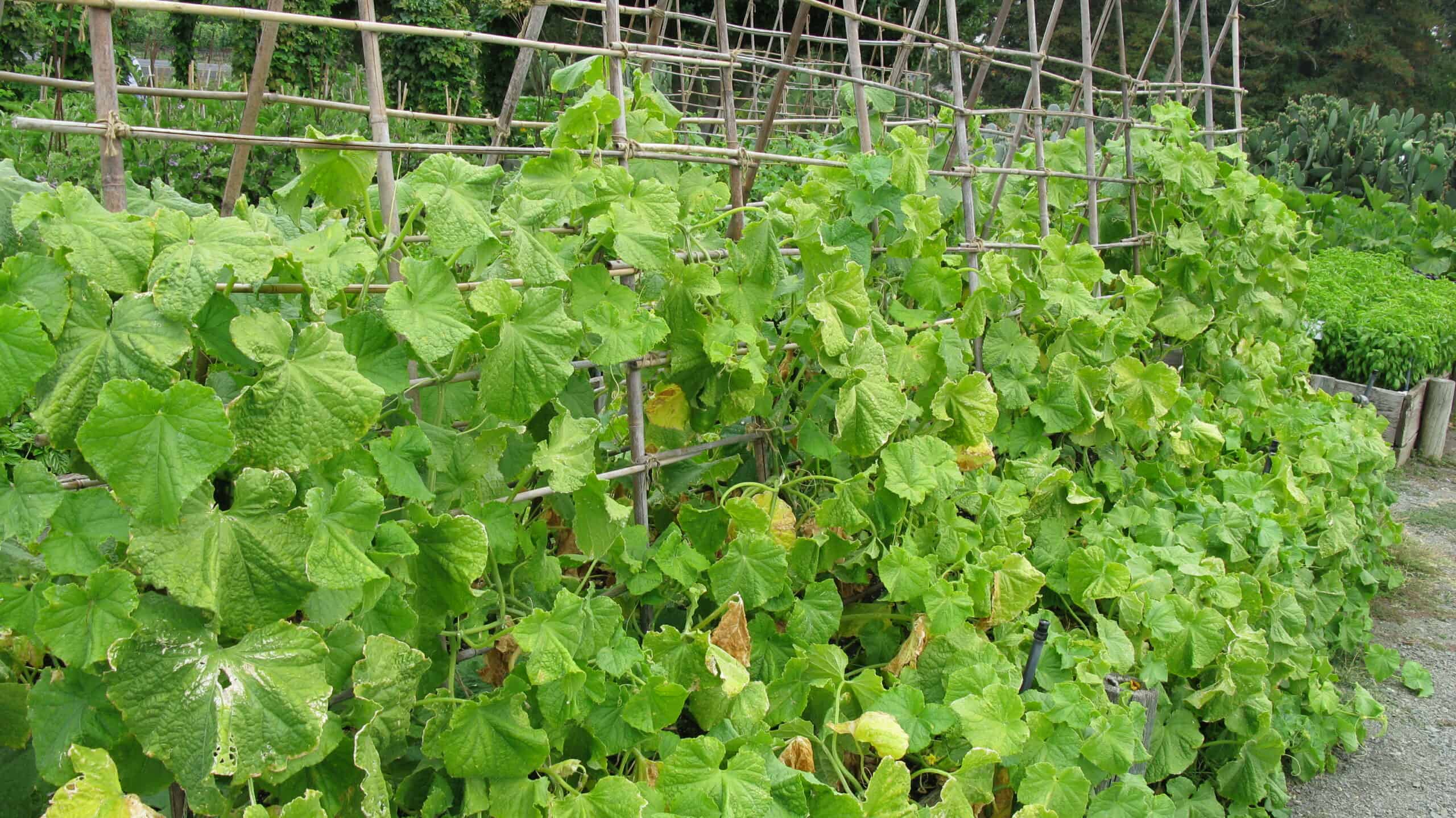
Supporting and Training Vines
Supporting and training your cucumber plants not only saves space but also improves air circulation, reduces disease, and keeps the fruits cleaner and straighter. Trellising is one of the most popular methods—use a sturdy vertical trellis, cattle panel, or even a tomato cage to guide the vines upward. As the plants grow, gently tie the vines with soft garden ties or clips to encourage them to climb. A-frame supports or teepee-style stakes made from bamboo or branches also work well and allow access from both sides. For smaller bush varieties or container-grown cucumbers, a compact wire cage or short trellis is usually enough. Training cucumbers upward is especially useful in small gardens or raised beds, and in my experience, it makes harvesting much easier since the fruits are easy to spot and stay off the ground.
- Use trellises, cages, or netting.
- Tie vines gently with soft ties as they grow.
I’ve grown cucumbers both on the ground and up trellises. Vertical growing leads to straighter fruits and makes harvesting easier.
Fertilizing Cucumbers
Feeding cucumbers properly throughout the growing season is key to getting a steady, healthy harvest. These fast-growing plants are heavy feeders, so I always start by enriching the soil with compost or aged manure before planting. Once the plants are established and begin to vine, I side-dress them with a balanced fertilizer (such as 10-10-10) or a vegetable-specific organic blend every 3–4 weeks. When flowers start to form, switching to a low-nitrogen, high-potassium fertilizer helps boost fruit production without encouraging excess leaf growth. In my experience, using a liquid seaweed or fish emulsion every couple of weeks gives the plants a noticeable boost in vigor and yield. Always water thoroughly after applying any fertilizer, and avoid overfeeding, which can lead to lush foliage but fewer fruits. Feeding consistently but moderately helps keep cucumbers productive and healthy throughout the season.
Cucumbers are moderate feeders:
- At planting: Mix compost or a balanced organic fertilizer into the soil.
- Midseason: Side-dress with compost or apply a liquid feed every 2–3 weeks.
Avoid high-nitrogen fertilizers—they encourage leaves, not fruit.
Pest and Disease Management
Managing pests and diseases in cucumbers is essential for a healthy harvest, and over the years I’ve learned that early observation and prevention are key. Common pests include cucumber beetles, aphids, and spider mites, all of which can cause significant damage if left unchecked. I regularly inspect the undersides of leaves and use row covers early in the season to protect young plants from beetles. If I spot aphids, a strong spray of water or an application of insecticidal soap usually takes care of them. For diseases like powdery mildew, downy mildew, and bacterial wilt, prevention starts with choosing resistant varieties, watering at the base to avoid wet foliage, and maintaining good airflow by spacing plants properly and trellising. I also rotate cucumber crops each year and remove any diseased foliage immediately to limit the spread. In my experience, consistent monitoring and early intervention keep most problems under control without the need for heavy chemical treatments, making for a healthier garden ecosystem.
Common Pests:
- Cucumber beetles
- Aphids
- Squash bugs
Common Diseases:
- Powdery mildew
- Bacterial wilt
- Downy mildew
Best Practices:
- Use row covers early in the season.
- Rotate crops yearly.
- Water at the base of the plant to reduce disease.
- Choose resistant varieties when possible.
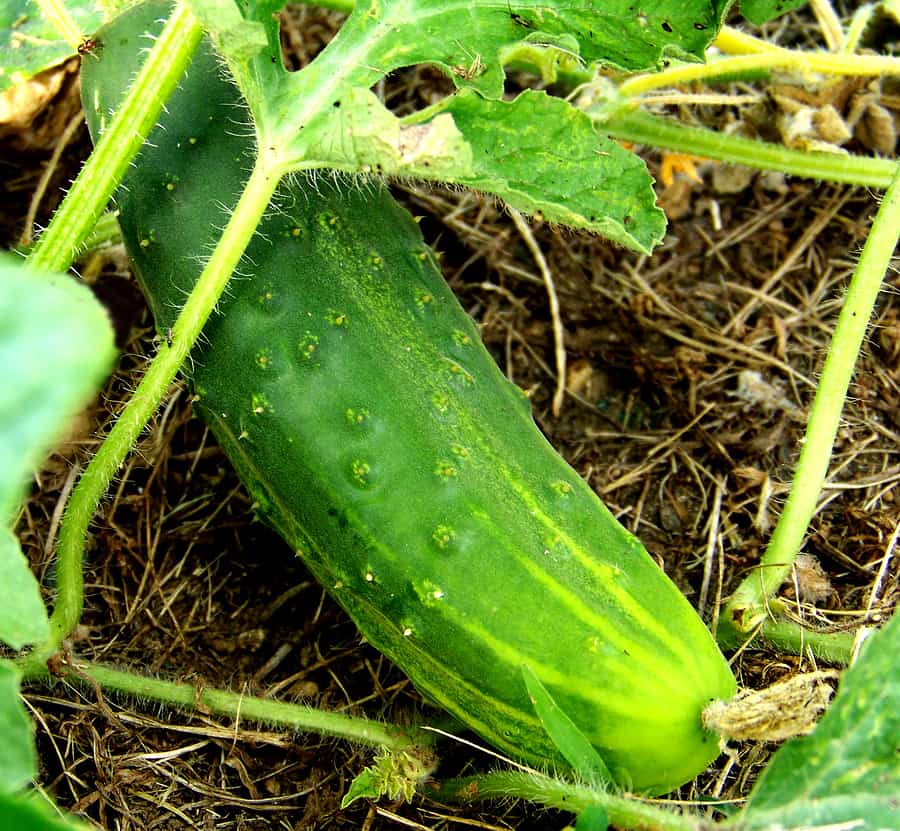
When and How to Harvest Cucumbers
Knowing when and how to harvest cucumbers makes a big difference in flavor, texture, and continued production. Cucumbers grow quickly—sometimes seemingly overnight—so I make it a habit to check plants daily once they begin to set fruit. In general, slicing cucumbers are best picked when they’re 6 to 8 inches long, while pickling varieties are often harvested at 3 to 5 inches. Leaving them on the vine too long can lead to bitterness and tough seeds, and it also signals the plant to slow down fruit production. I always use pruning shears or a sharp knife to cut cucumbers from the vine rather than pulling them, which can damage the plant. After harvest, rinse and store cucumbers in the fridge for the best freshness. In my experience, the more often you harvest, the more the plant produces—so staying on top of it rewards you with a continuous crop.
- Pick early and often to encourage continued production.
- Harvest size depends on variety: slicing types around 6–8 inches; pickling types at 3–5 inches.
Use scissors or pruners—don’t twist, which can damage vines.
Once cucumbers are harvested, proper storage is crucial for maintaining their crispness. I typically store cucumbers in the vegetable crisper drawer of the fridge, where they can last anywhere from 1 to 2 weeks. If you’re planning to keep them for longer, consider pickling or fermenting to preserve them. For the freshest taste, cucumbers are best eaten within a few days of harvest.
On the flip side, cucumbers that have been left on the vine too long will begin to show signs of being overripe. Common signs include:
- Large size: Cucumbers may grow overly large and become woody or seedy.
- Yellowing skin: The skin may turn yellow, signaling that the cucumber is past its prime.
- Bitter taste: As cucumbers mature, they may develop an unpleasant bitterness, especially around the seeds.
- Wrinkled skin: A cucumber that’s starting to dry out or lose moisture will develop wrinkled or shriveled skin.
I recommend checking cucumbers frequently to avoid these signs, ensuring you’re harvesting at their peak for the best flavor and texture.
Experience Tip:
Check your plants daily during peak season. Cucumbers can go from perfect to overripe in just a day or two.
Common Problems and Solutions
| Problem | Likely Cause | Solution |
|---|---|---|
| Bitter taste | Heat stress or irregular watering | Keep soil evenly moist, mulch |
| Yellow leaves | Overwatering or nutrient deficiency | Adjust watering, feed plants |
| Misshapen fruit | Poor pollination | Attract pollinators or hand-pollinate |
FAQs About Growing Cucumbers
Can I grow cucumbers in containers?
Yes! Use a large container (at least 5 gallons), a compact bush variety, and provide support.
Do cucumbers need pollinators?
Yes, most do. Bees and other pollinators are essential. You can hand-pollinate if necessary.
Why are my cucumbers turning yellow?
They may be overripe or lacking nutrients. Harvest earlier and feed plants regularly.
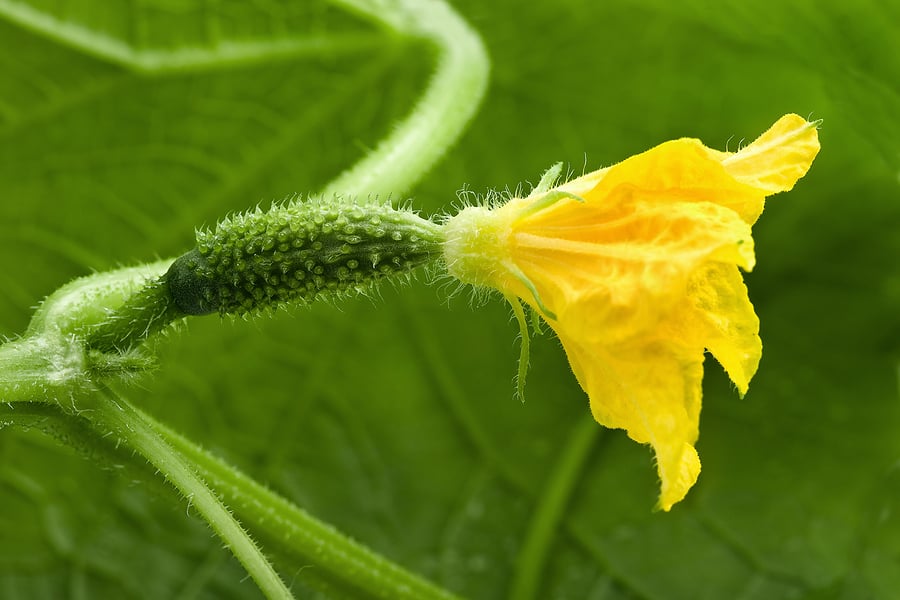
Quick cucumber growing tips
- Sow cucumber seed in the garden or set out transplants 3 to 4 weeks after the average last frost date in spring.
- The ideal soil temperature for growing cucumbers is 70°F (21°C).
- Sow cucumber seeds indoors as early as 6 weeks before transplanting seedlings into the garden.
- Protect cucumbers from unexpected frost or chilly nighttime temperatures early in the season. Use floating row covers or plastic tunnels to keep the chill away.
- Cucumbers require 55 to 65 frost-free days from sowing to reach harvest.
Related Posts:
Ultimate Beginner to Expert Guide to Growing Cucumbers
Planning and Planting
- The Best Cucumber Varieties for Your Garden
- How to Plant Cucumber Seeds and Seedlings: Site, Spacing and Soil Needs
- Growing Cucumbers in Containers: Space -Saving Tips for Success
Care and Maintenance
- Watering, Feeding, and Caring for Cucumbers: A Complete Guide
- How and When to Prune Cucumbers for Healthier Vines
- How to Grow Cucumbers That Are Not Bitter Tasting
- Cucumber Flowering, Pollination, and Fruit Formation: Ensuring Maximum Yield
Troubleshooting and Pest Control
Harvest and Beyond
- When and How to Harvest Cucumbers
- How to Store and Preserve Cucumbers for Freshness and Flavor
- Nine Cucumber Serving and Cooking Tips
More how to grow articles:
Learn how to plant, grow, and harvest your favorite vegetables. Click below for all you need to know.
- Artichoke
- Arugula
- Asparagus
- Beans, Snap
- Beets
- Broad Beans
- Broccoli
- Brussels Sprouts
- Cabbage
- Cantaloupe — Melons
- Cardoon
- Carrots
- Cauliflower
- Celeriac
- Celery
- Chard
- Chayote Squash
- Chickpeas
- Chicory
- Chinese Cabbage
- Collards
- Corn Salad
- Corn, Sweet
- Cresses
- Cucumbers
- Eggplant
- Endive and Escarole
- Fava Beans
- Florence Fennel
- Garbanzo Beans
- Garlic
- Horseradish
- Jerusalem Artichoke
- Kale
- Kohlrabi
- Leeks
- Lettuce
- Lima Beans
- Melons
- Mizuna
- Mustard Greens
- New Zealand Spinach
- Okra
- Onions
- Parsnips
- Peanuts
- Peas
- Peppers
- Potatoes
- Pumpkins
- Radicchio
- Radishes
- Rhubarb
- Rutabaga
- Salsify
- Shallots
- Sorrel
- Southern Peas
- Soybeans
- Spinach
- Squash, Summer
- Squash, Winter
- Sunchokes
- Sweet Potato
- Swiss Chard
- Taro
- Tomatillo
- Tomatoes
- Turnips
- Watermelon
- Zucchini
Garden Planning Books at Amazon:
- Vegetable Garden Almanac & Planner
- Kitchen Garden Grower’s Guide Vegetable Encyclopedia
- Vegetable Garden Grower’s Guide
- Tomato Grower’s Answer Book

